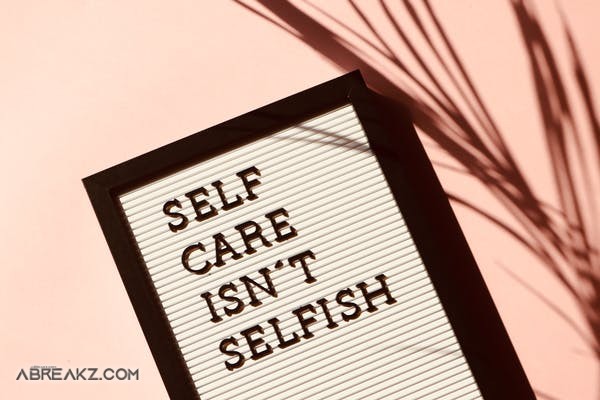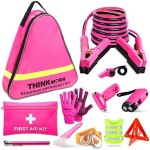Mental Endurance, Keeping your clients on track with their fitness goals is one of the most difficult aspects of personal training. Mental Endurance Some clients struggle to maintain their momentum while others may set their standards (or expectations) too high. Both can make customers feel very frustrated when they cannot achieve the goal.
No matter what pitfalls you find more common, experts agree that the most important factor in staying on track with — and crushing — fitness goals is a fitness mindset.Working with your clients to develop the right fitness mindset can mean the difference between a long-term satisfied client and one who suffers. When clients can’t maintain this mindset, they often leave the hard-earned software for their own success.

The best way to prepare your clients for the ultimate success of the program is to work with them on their thinking about successes and failures in fitness.The truth is that life happens. Relapses occur. Sometimes it is impossible to stay on track with the original plan. Preparing your clients to deal with setbacks by developing a positive fitness mindset will set you apart as a coach. It will also put your clients on the path to success.
Check out these 8 hacks to keep your clients on track with their fitness goals
Contents
#1. Set SMART goals
#2. Building Momentum
#3. Don’t worry about little setbacks
#4. Get ready for the hurdles
#5. Be your own cheerleader
#6. Celebrate the successes
#7. Schedule Workouts
#8. Advance Path
#9. The bottom line is the right fitness mindset

1. Set SMART goals
Without a clearly defined goal, it is impossible to know when you have reached success. More than simply setting a clear goal, it is important to manage expectations by creating a realistic and achievable goal. This is something coaches understand well, but clients may not. It is important to establish this mindset early on. You can get to the same page with your customer by writing and reviewing these goals together. SMART goals are an acronym commonly used in goal setting: Specific, Measurable, Achievable, Adequate, and Timely If you follow this general model of setting goals with your clients, you can use micro-goals to create positive momentum building. By setting small, short-term, achievable goals on the way to larger goals, you will begin to build positivity and accountability with your customers. Both are essential ingredients that contribute to success according to the Help Scout article on “The Science of Setting and Achieving Goals.”
2. Building Momentum
If your client has a long-term fitness goal, like running a marathon in six months, he can’t expect to get out on a date or race and crush that goal. The best approach is to break up the training plan and set a series of small goals on the way to the overall goal.
Work with your client so that they understand that this is not just a strategy in the sense of building endurance, level of fitness and participation on the way to the race. They also build momentum by setting mini-goals, which leads to a positive mental impact.
When you and your customer create small goals that they can achieve on a daily basis, you build your customer’s trust. Taking advantage of the “feelings” of success and pride on a very regular basis is a great step toward a positive fitness mindset.
As this begins to become routine, the resistance or struggle with goals large or small begins to wane. You’ve created a scenario where your client picks up speed and momentum, and things seem to flow.
3. Don’t worry about little setbacks
Inevitably, your customer will experience some small setbacks every now and then. Perhaps a particularly busy week or illness interrupts training.
The key here is to set an intent with your client to adopt a mindset that avoids viewing small setbacks as “failures” to dwell on.
Life gets in the way sometimes, and even if a setback can be avoided, we gain nothing from wading through it. Doing so will only cause the client to lose valuable momentum. This can spread negativity far and wide, jeopardizing your client’s larger goals.
No matter how many small setbacks or days your client may miss, it is important to foster a “back to the horse” fitness mentality in all of your clients.
4. Get ready for the hurdles
Because relapses are common, it’s important to strategize around the fitness mindset you want to adopt when this happens.
As you define your goal, discuss with your clients, identify some potential roadblocks.
For example, your client did not achieve their weight goal in 4 weeks from today, which supports the long-term client weight goal at 4 months. How will he react? What happened in the past?
Your customer might say something like, “I’m going to be really frustrated and probably enjoy cake and ice cream and X-Large pizza.” It is important to establish and talk about an alternative approach.
Ask them to suggest an alternative reaction, or work with them to visualize something like this: “I will first assess how much progress you have made.
I’ll admit how far I’ve come where I’ve been or where I’ve been in the past, and I’ll calculate how much that takes me away from my goal. I will see if there is a way I can make up the difference.”
Develop a fitness mindset with your client early on so you don’t let small setbacks discourage them. Try to see setbacks as an opportunity to feed your customer’s focus.
5. Be your own cheerleader
An important part of developing a strong mindset is getting your client to step into the role of his or her cheerleader.
Many of us are guilty of wanting external validation, especially when it comes to fitness goals. However, we tend to focus on rewarding the end result. It is important to celebrate the entire journey, and all effort, focus, struggle and commitment are part of the process.
Encouraging your client to learn about all of their wins – big or small – is important to making them feel good about their investments. The key to feeling good about all the work days they invest on the way to the goal.
It’s the key to feeling good about all the work days they invest on their way to the goal.
Whether your clients are having tough or wonderful days, coach them to stay motivated, inspired and positive.
6. Celebrate the successes
We live in a world focused on accomplishments, yet we often forget to stop and celebrate.
Most of the time, right after a win, we start focusing on the next goal instead of slowing down and enjoying our achievement. Put an end to it with your customers!
Invest in celebrating successes with your clients like completing an exercise they dread. Or just ran this race in PB! Not only will this help them feel positive and empowered when embarking on your future goals, but it is also important to be the general mindset in life. Recognizing your successes results in happiness, self-esteem, validation, and fulfillment.
7. Schedule Workouts
Let’s talk about planning and accountability. Scheduling workouts in advance is key. When you and your clients hold sessions together, this may be less of a problem, assuming you have regular time.
If your system is more relaxed, or your client performs individual program exercises on their own time, they can still benefit from the structure. Use a calendar or an app to schedule workouts for a specific date and time. This standardization goes a long way in encouraging follow-up.
An important fitness mindset to put in place with your client is that once you design a program, sticking to it takes priority. Clients should not arbitrarily decide one day or the next whether or not this exercise fits. Reaching complex goals requires many pieces in the puzzle, and when one piece is out of control, you are not guaranteed the same results.
Also, specify with clients that switching workouts might be fine, but skipping a workout and promising you’ll make it another day is a dangerous approach. Clients who do so run the risk of deviating from the right path.
Sticking to a calendar, and then marking a time when you were or weren’t able to complete an exercise or goal scale, is a powerful strategy. It is also a data point that you can check with your customer regularly.
Xero fits is an excellent resource for sharing individual workouts or professional coaching sessions with your clients, tracking progress, adding comments, and keeping a calendar that you and your client can refer to when assessing progress.
8. Track Progress
Talk about tracking and evaluating progress: Encourage your customers to track progress. This can be through weighing, measurements, rep, weight logging, timed workouts, progress images, and other criteria. No matter what, keeping yourself accountable creates a strong fitness mindset. Otherwise, we sometimes forget how far we’ve come.
You may have clients who look in the mirror every day and don’t see progress. If you encourage them to take updated progress photos after 4 weeks, they will likely be in awe of the changes in their bodies when comparing the photos.
Lifehacker.com champions the power of progress photos – or even “selfies” as a way to stay on track with your fitness goals. Progress photos establish a visual starting point, which really allows you to “see” your entire fitness journey.
9. The bottom line is the right fitness mindset
Exercises like this will begin to develop a mindset of confidence in the process and encourage your clients to keep going.
By helping your clients form a positive fitness mindset throughout their fitness journey, you will be able to build stronger relationships with them. Most importantly, you will be able to create more enjoyable experiences for everyone. If you think Xerofit is the right solution for you, take advantage of the free trial!

When it comes to exercise, it is natural to get confused between the terms endurance and the term stamina, and here we try to explain the subtle differences between them.
Stamina means the mental and physical ability to maintain activity for an extended period of time, and people usually associate it with feeling energetic by performing a particular activity.
As for endurance, it is the body’s physical ability to continue exercising for a long period of time, and it is divided into two parts: cardiovascular endurance and muscular endurance.
Cardiovascular endurance means the ability of your heart, blood vessels and lungs to feed your body with oxygen, and muscular endurance is the ability of your muscles to work continuously without feeling tired.
In this article we will seek to provide a guide to improving your endurance and endurance, while delving into the difference between them.
The difference between endurance and endurance
For a professional basketball player, having good endurance means being able to get through an entire game without losing his performance.
In contrast, the endurance of an 85-year-old grandfather means he has enough energy that he can play a little with his grandchildren.
On the contrary, endurance is not related to physical fitness, but only supports it.
Generally speaking, physical fitness is divided into five components:
Cardiovascular endurance.
Muscular endurance.
Flexibility.
body composition.
muscle strength;
We note from the above that physical fitness needs both types of endurance, and is not related to endurance.
Endurance can also be measured by various tests, for example, to measure cardiovascular fitness, you can run a 1.5-mile run test, and compare the result with age-specific standards.
Several tests may also be performed to measure muscular endurance such as the maximal stress test to measure upper body endurance, or the maximum sitting test to measure basic body endurance.
How to increase stamina and endurance
Both your endurance and endurance can be improved with aerobic exercise, which regularly challenges your lungs and heart.
Here are some tips for adopting your own endurance program:
Determine the principle that makes you happy
A key component of building an endurance program is identifying the principle that makes you happy, as your body adapts to the type of exercise you do regularly.
 If you do exercises that focus on the upper body, only upper body strength will improve, and vice versa, so define your principle, and be aware of what your body needs.
If you do exercises that focus on the upper body, only upper body strength will improve, and vice versa, so define your principle, and be aware of what your body needs.
Overload principle
Another key concept in building your fitness program, this principle involves gradually increasing the amount and intensity of exercise you do to improve your fitness.
For example, if you’re aiming to run 10 miles more quickly, then you’ll need to gradually increase the difficulty of your workouts by increasing the distance you run, increasing your running speed or increasing the time you spend running.
Set a goal of more than 150 minutes per week
Regular exercise helps boost your energy levels, helps you sleep better, and increases blood flow throughout your body.
The American Heart Association recommends at least 150 minutes a week of aerobic exercise to strengthen your heart and lungs, and exercise for more than 300 hours a week is associated with additional benefits.
Practicing yoga and meditation
Including stress-relieving activities in your weekly routine can also help you support your body to relax and improve your ability to handle more intense workouts.
A study was conducted in 2016 on a group of medical students, who underwent six weeks of yoga and meditation exercises, and it was noted in the results a significant improvement in feelings of peace, focus and endurance.
Find your target heart rate
Your target heart rate during aerobic exercise is 50 to 70% of your maximum for moderate intensity activities.
In contrast, the target heart rate during aerobic exercise is 70 to 85% of your maximum for strenuous activity.
To estimate your maximum heart rate, you need to subtract your age from 220. For example, if you are 40 years old, your maximum heart rate is 175.
Try HIIT workouts
HIIT stands for High-intensity interval training, such as running at a fast pace for 10 seconds and then resting for 30 seconds.
According to several studies, HIIT training has been found to improve insulin sensitivity, improve cardiovascular fitness, improve blood pressure and lose belly fat.
Therefore, these exercises are ideal for people who are already physically active.
Choose the exercises you enjoy
Many people associate developing fitness with going to the gym, lifting weights or running on the treadmill, but even so, if you don’t enjoy these activities it will affect your commitment to them.
That’s why think about exercises you enjoy rather than forcing yourself to do exercises you don’t like.
For example, if you hate running but love to dance, you can try Zumba exercises, for example, which is a great way to improve your endurance.
Keep your body hydrated
To prevent dehydration during exercise, it’s important to stay hydrated throughout the day, especially if you’re exercising in hot or humid conditions.
If your workout sessions are very long, it’s okay to try drinking electrolytes to replace minerals lost through sweating.
Suggestions for exercises to increase stamina
Regular aerobic exercise contributes to strengthening the heart, lungs and improving blood circulation, thus increasing your endurance and building your endurance.
Aerobic exercises are exercises that can be practiced for a long time and contribute to raising the respiratory rate and heart rate, the most famous of which are jogging, dancing, swimming, tennis, basketball, hockey and brisk walking or what is known as jogging.
If you train regularly and at regular intervals, you will start to notice significant improvement within two or three months.
Do not try to be hard on yourself by increasing the weights you lift or the distance you move, start all exercises gradually so as not to cause any injuries or fatigue.
For example, if you aim to run 10 miles, start running for three miles, and after days increase the distance to four miles until you reach 10 miles after several weeks, and you will notice your body adapting to it, with less fatigue and no injuries.
It’s OK to talk to a professional coach regardless of your fitness level. The coach can help you design a program appropriate for your current fitness level, and the coach will also support you in setting realistic goals that match your endurance.
After all, endurance and endurance are very similar terms, and your endurance and endurance can be developed together with 150 minutes of aerobic exercise per week.







































